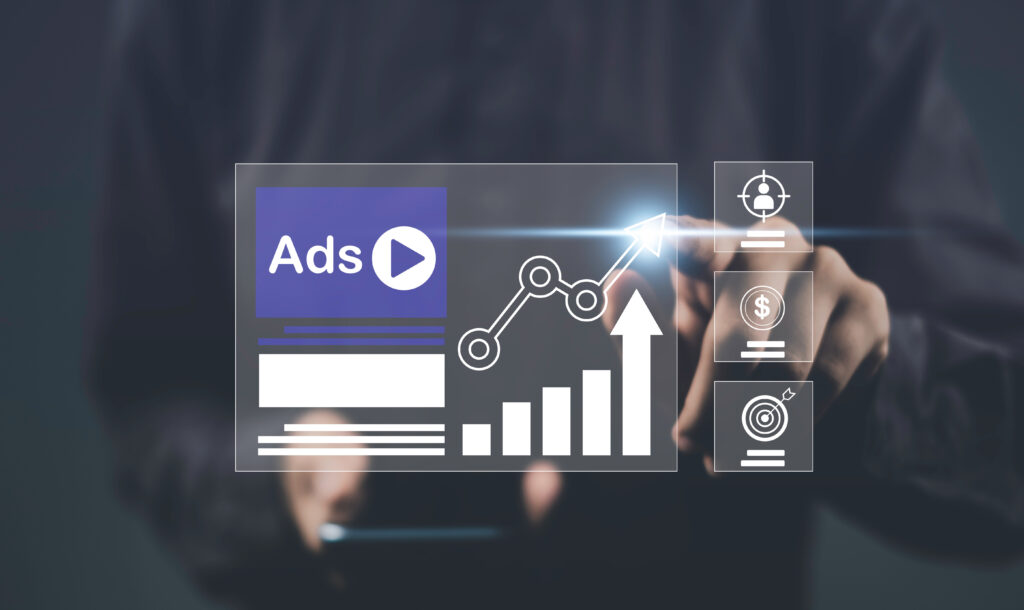As technology continues to revolutionize the advertising industry, programmatic advertising has emerged as a key player in the digital marketing landscape. Display advertising programmatic approaches have completely transformed how advertisers buy and place display ads, offering unparalleled efficiency, precision, and scale. This guide will break down the core components of display advertising programmatic strategies and explore their significance for marketers looking to stay ahead of the competition.
What is Display Advertising Programmatic?
At its core, programmatic advertising refers to the automated process of buying and selling ad inventory in real-time through sophisticated algorithms. Unlike traditional manual methods, programmatic advertising utilizes machine learning and artificial intelligence to target specific audiences across various platforms and devices. The term display advertising programmatic pertains specifically to the use of this technology for display ads—visual ad formats that appear on websites, videos, and apps, often in the form of banners, pop-ups, or rich media.
This approach eliminates the guesswork associated with traditional advertising, ensuring that marketers reach the right audience at the right time and with the right message, all while maximizing return on investment (ROI). By streamlining the process through real-time bidding (RTB) or private marketplaces (PMPs), programmatic platforms give advertisers unmatched efficiency and control over their campaigns.
Key Benefits of Display Advertising Programmatic
Programmatic advertising offers several advantages for marketers and advertisers alike, some of which include:
1. Precise Audience Targeting
One of the most significant benefits of programmatic display advertising is the ability to refine audience targeting using a wealth of data points—such as demographics, browsing behavior, geolocation, and even purchase history. Advertisers can create custom audience segments to ensure their display ads resonate with specific user needs and preferences.
2. Real-Time Optimization
Unlike traditional campaigns that might take weeks or months to adjust, programmatic advertising allows marketers to optimize campaigns in real time. Data-driven insights provide actionable metrics that help tweak ad placements, creatives, or bidding strategies on the go.
3. Cost-Effectiveness
The automation of processes in programmatic advertising significantly reduces human errors and administrative costs, making campaigns more cost-effective. Additionally, real-time bidding ensures that marketers only pay for impressions that reach valuable audiences, minimizing wasted spend.
4. Multichannel Reach
Display advertising programmatic campaigns are not limited to a single platform—marketers can deploy display ads across websites, mobile apps, video streaming platforms, and even connected TV. This wide-reaching capability makes it easier to maintain a consistent brand presence across multiple channels.
5. Enhanced Insights and Reporting
Programmatic platforms provide comprehensive reporting and analytics, allowing advertisers to measure the performance of their campaigns. Metrics such as impressions, click-through rates, and conversion rates offer deep insights into what works and what doesn’t, enabling future improvements.
How Does Display Advertising Programmatic Work?
The process of programmatic display advertising involves several key players and technologies working together, including:
- Demand-Side Platforms (DSPs): These platforms help advertisers manage their programmatic campaigns, from selecting target audiences to optimizing bids for ad inventory.
- Supply-Side Platforms (SSPs): Publishers use SSPs to list and sell their ad inventory, ensuring that their content is monetized effectively.
- Ad Exchanges: Acting as digital marketplaces, ad exchanges facilitate the buying and selling of ad inventory between advertisers and publishers.
- Data Management Platforms (DMPs): These platforms collect, organize, and analyze data to help advertisers build better-targeted campaigns.
When a user visits a website, programmatic technology instantly evaluates whether that user matches an advertiser’s target criteria and bids on the available ad placement through real-time bidding. This entire process happens in milliseconds, ensuring that the most relevant ads are delivered seamlessly to users.
Best Practices for Display Advertising Programmatic Campaigns
To achieve success with any programmatic advertising strategy, marketers should keep the following best practices in mind:
1. Set Clear Objectives
Before launching a campaign, ensure you have well-defined goals. Are you aiming to drive brand awareness, increase website traffic, or boost conversions? Setting clear KPIs will guide your campaign’s structure and focus.
2. Prioritize High-Quality Data
The effectiveness of programmatic campaigns heavily relies on the quality of data used. Work with reliable data providers or collect first-party data to ensure accurate audience targeting and relevant ad placements.
3. Opt for Ad Creatives That Capture Attention
Since programmatic advertising enables hyper-targeting, your ad creatives must be engaging and tailored to your audience. Use compelling visuals, concise messaging, and clear calls-to-action (CTAs) to maximize engagement.
4. Leverage Retargeting Strategies
Display advertising programmatic is exceptional for retargeting campaigns. By focusing on users who have already interacted with your brand, you can deliver personalized ads that nudge them toward taking action, such as completing a purchase.
5. Monitor and Optimize Campaigns Regularly
Programmatic platforms provide an array of performance metrics, allowing you to make data-driven decisions. Review your campaigns often, and test new approaches to optimize for better results.
Challenges and How to Overcome Them
While display advertising programmatic offers numerous benefits, it is not without its challenges. Advertisers may encounter issues such as ad fraud, lack of transparency, or difficulty in understanding the complexities of platforms used. However, these challenges can be mitigated with the right strategies:
- Implement Fraud Prevention Measures: Use tools to detect and block fraudulent traffic, ensuring that your ad budget is well-spent.
- Work with Trusted Platforms and Partners: Opt for reputable DSPs, SSPs, and data providers to ensure the accuracy and effectiveness of your ads.
- Invest in Training or Expertise: Programmatic advertising platforms can be intricate—consider hiring experienced professionals or working with agencies well-versed in programmatic campaigns.
The Future of Display Advertising Programmatic
As technology evolves, the future of programmatic advertising looks incredibly promising. Innovations such as artificial intelligence and machine learning will continue to refine audience targeting and campaign optimization. Additionally, as concerns around privacy rise, adhering to data protection regulations while leveraging first-party data will become even more critical for advertisers.
Ultimately, display advertising programmatic will remain a fundamental aspect of digital marketing thanks to its unmatched precision, scalability, and efficiency. By staying informed and adopting best practices, marketers can harness the full potential of programmatic technology and achieve outstanding results.

















+ There are no comments
Add yours